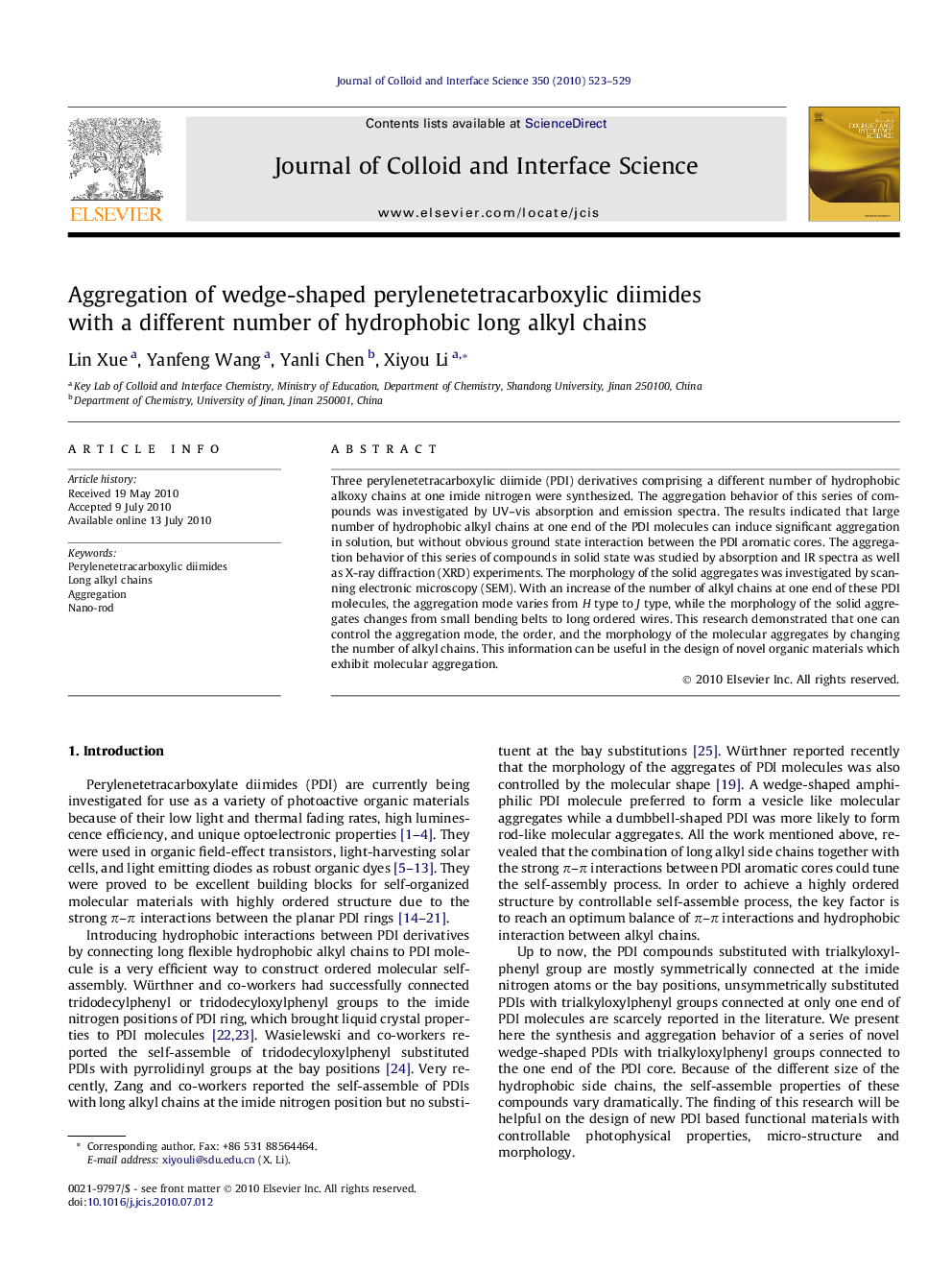| کد مقاله | کد نشریه | سال انتشار | مقاله انگلیسی | نسخه تمام متن |
|---|---|---|---|---|
| 609151 | 1454609 | 2010 | 7 صفحه PDF | دانلود رایگان |

Three perylenetetracarboxylic diimide (PDI) derivatives comprising a different number of hydrophobic alkoxy chains at one imide nitrogen were synthesized. The aggregation behavior of this series of compounds was investigated by UV–vis absorption and emission spectra. The results indicated that large number of hydrophobic alkyl chains at one end of the PDI molecules can induce significant aggregation in solution, but without obvious ground state interaction between the PDI aromatic cores. The aggregation behavior of this series of compounds in solid state was studied by absorption and IR spectra as well as X-ray diffraction (XRD) experiments. The morphology of the solid aggregates was investigated by scanning electronic microscopy (SEM). With an increase of the number of alkyl chains at one end of these PDI molecules, the aggregation mode varies from H type to J type, while the morphology of the solid aggregates changes from small bending belts to long ordered wires. This research demonstrated that one can control the aggregation mode, the order, and the morphology of the molecular aggregates by changing the number of alkyl chains. This information can be useful in the design of novel organic materials which exhibit molecular aggregation.
Three perylenetetracarboxylic diimide derivatives connected with a different number of hydrophobic alkoxy chains at one imide nitrogen were synthesized. The aggregation behavior of this series compounds was investigated by different spectroscopic methods.Figure optionsDownload high-quality image (135 K)Download as PowerPoint slideResearch highlights
► Three new perylenetetracarboxylate diimide derivatives are prepared
► Different number of alkyl chains is connected at one of the two imide nitrogen atoms
► Self-assemble process is investigated by absorption and fluorescence spectra
► The relative strength of hydrophobic and π–π interaction affect the aggregation mode
Journal: Journal of Colloid and Interface Science - Volume 350, Issue 2, 15 October 2010, Pages 523–529